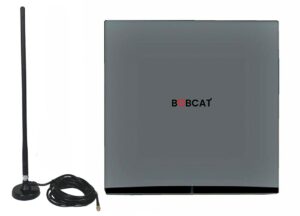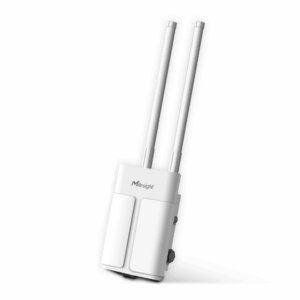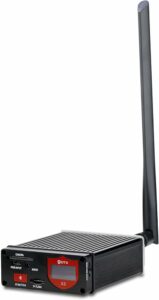In the cryptocurrency industry, mining is gaining massive attention from crypto enthusiasts as it offers a way to earn passive income from home without much effort. However, Helium mining is unlike normal mining of cryptocurrency. Helium mining is a process where miners earn Helium (HNT) tokens by building and maintaining a wireless network for the Internet of Things (IoT).
In this article, we’ll get to know more about Helium mining, how Helium mining works, the pros and cons of Helium mining, and many more things. So, read until the end for a better understanding of Helium Mining.
What is Helium Mining?
Helium mining is a phenomenon where miners earn HNT tokens for the effort to provide wireless network coverage to devices like smartphones and tablets using a mining device called Helium Hotspot. However, the main purpose of Helium is to create and maintain the wireless network for Internet of Things (IoT) devices. Additionally, these devices require low power and long-range wireless connectivity.
Unlike proof-of-work (PoW) or proof-of-stake (PoS), Helium Network works on a unique model called proof-of-coverage (PoC). With this PoC model, Helium miners showcase that they are providing and covering wireless networks across the area using a Hotspot. With the help of Hotspot, miners send and receive signals and also acknowledge the system that they are covering a wide range of areas.
Through this, miners showcase that their hotspot device is working properly, and based on this performance, miners receive HNT tokens as a reward. With the help of this process, the system ensures that the network is efficient and is working efficiently.
How does Helium Miner Work?
Helium miners are the ones who create a decentralized wireless network that allows the connection of Internet of Things (IoT) devices like sensors, phones, trackers, etc, without the need for any single authority or company.
Here’s how Helium Miner works:
Step 1: Helium Mining Setup
This is the initial phase, where miners purchase helium mining devices like Hotspot
Step 2: Providing coverage
Once the mining device setup is completed, the Hotspot provides a wide range of wireless coverage for the IoT devices. For this, it uses less power, less data, and also covers a large area.
Step 3: Proof-of-Coverage (PoC)
Helium networks work on a proof-of-coverage (PoC) mechanism and send and receive signals in the hotspot to cover a wide range of networks. Additionally, for this Hotspot, participate with another hotspot either near your location or at a distance. These are also recorded to ensure all other hotspots near you are active.
Beacon: In this one hotspot sends a signal to the nearby hotspot.
Witnessing: the nearby hotspot near the above hotspot becomes a witness as it detects a signal from the initial hotspot.
Challenges: Some hotspots are selected and they act as a challenger and they validate all the coverage of the Hotspot near the location.
Step 4: Helium (HNT) Earning
Based on the activity of Hotspots, miners earn HNT tokens. This means that Hotspot acts as a beacon, witness, and challenger, and this performance helps miners earn HNT tokens. The more powerful the Hotspot more miners earn.
This is how Helium miners work and earn HNT tokens.
Best Helium Miners to Earn HNT
SenseCAP Miner: It is one of the most popular Helium miners because it is very simple and easy to use. As it is a software-based mining tool that does not need hardware, users can manage and control this Helium miner’s hotspot (Node) from a mobile phone.

Additionally, SenseCAP Miner is an official Helium Network miner, which is built in collaboration with the Seed Hardware manufacturer. However, it has different RAM options available, including 2GB, 4GB, or 8GM, and its price starts from $519.
Bobcat Miner: Bobcat Miner is one of the most popular and powerful miners that topped in 2021 in terms of favoritism by the Helium miners community. The reason for its popularity and favoritism is its capability within the Helium Network, which helps miners earn more HNT tokens. It supports both Wifi and Ethernet connectivity. Additionally, Bobcat miners also support 5G for HNT mining.

With all these unique and powerful features, Bobcat Miner costs only $27,2, which is comparable lower than all other miners.
Nebra Rock Pi: It is a very versatile Helium miner, and those who are interested in this miner can use its paid and free versions to earn HNT tokens. In the paid version, the miners have the facility to remotely control and manage the Helium miner using a mobile device. Additionally, Nebra Rock Pi is known for its durability and efficient coverage.

Besides all these technical things, Nebra Rock Pi also has a strong and large technical support team that helps miners in case of any emergency. It also holds the place of the fastest processing unit. However, the cost of Nebra Rock Pi is around 500 euros.
Milesight LoRaWAN: Using this Helium Miner, users can earn more HNT tokens as it has a high antenna, which makes it different from others. The reason users earn more HNT tokens is that with the help of this antenna, this miner provides a wide range of network coverage or proof-of-coverage. Additionally, it is also of two types, one for indoor and another for outdoor use.

However, Milesight LoRaWAN is one of the costliest Helium miners across the cryptocurrency market. The cost of this miner is nearly $800.
Radacat Cotx-X3: It is an indoor mining device, and this miner has an option to add a high-gain antenna, which helps miners to cover a wide range of proof-of-coverage. This type of mining device is used by firms to mine HNT tokens at a large scale. However, the main board of this mining device is Raspberry Pi 4B, and it uses Ubuntu.

This mining device has the potential to earn $9,000/year, and the cost of this device is in the range between $425 and $700.
Pros and cons of Helium mining
Pros of Helium Mining:
- Using Helium Mining, miners can earn HNT tokens and generate a passive income source.
- Helium mining can make wireless networks more decentralized, and the dependency on any company will be removed.
- Helium Mining is straightforward, and it does not require technical knowledge.
- Unlike Bitcoin Miner, Helium Miner’s main component, which is called the hotspot, consumes less electricity, which helps miners minimize operational costs.
- Helium miners are cost-effective, and users can either use the free version or the paid version.
Cons of Helium Mining
- To participate in Helium mining, you need to pay the initial cost of buying a node or Hotspot, and this might create an obstacle for Miners.
- In this, if you participated, there is no guarantee that you will earn HNT tokens unless and until you are in a locality where more helium miners are already there.
- As the node and hotspot are connected to the internet, they require maintenance, like updates or addressing any issues.
- Lack of manufacturer availability.
Is it worth mining Helium?
Helium mining depends on a few things, such as location, initial investment, internet connectivity, and others. If you are living in a less populated rural area where there is a network issue and fewer IoT devices, then there is a high chance that miners earn fewer HNT tokens because of low network coverage.
However, suppose you live in an urban area where the internet connectivity is good and have a large number of IoT devices. In that case, miners can earn relatively more HNT tokens for those reasons. Besides these earning potentials, the initial investment to start Helium is quite costly, but the operation costs are low due to the lower energy consumption level.
So, if you live in an area where either Helium miners are already there or you live in an urban area, then it is worth mining Helium tokens.
Final thought
Helium mining is a process in which miners earn HNT rewards for maintaining and building wireless connectivity for IoT devices. For this, miners use a mining device called Hotspot (NODE), and it is the main component of Helium mining. However, unlike other Proof-of-Stake (PoS) or Proof-of-Work (PoW), Helium mining works on a special model called Proof-of-Coverage (PoC), which records how a hotspot or Node covers the wireless network connectivity to IoT devices.
FAQs
Is Helium Mining Profitable?
Although the answer to this question depends on several factors, if anyone starts Helium mining in an area where the use of IoT devices is huge in number and there are already Helium miners, then Helium mining is profitable. Otherwise, it is not, because Helium mining is associated with lots of costs.
4 Best Helium Miners
There are many Helium miners available in the market, but the top helium miners are as follows:
- SenseCAP Miner
- Bobcat miner
- Nebra Rock Pi
- Milesight LoRaWAN
These are the 4 best Helium miners in the market.
Benefits of Helium Mining
- Helium Miners reduce the dependency of wireless network connectivity on the entity that is controlling the whole wireless network.
- Through Helium mining, users not only build and maintain wireless network connectivity for IoT devices but also help users earn HNT tokens for their efforts.
- Helium mining is very simple and doesn’t require any technical knowledge, and its main component needs a small amount of energy to operate.





















